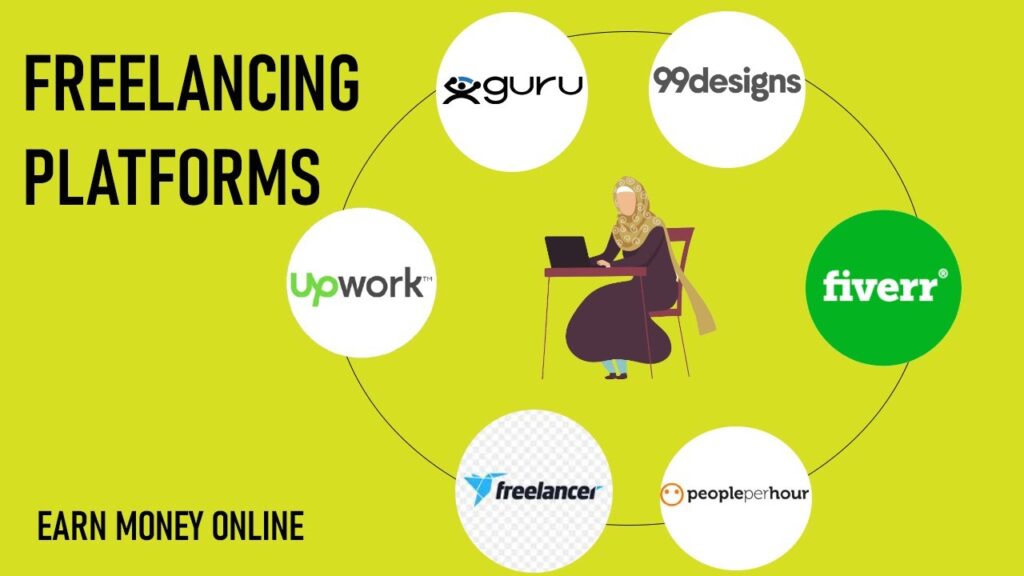Freelancing Platforms can be an alluring career choice for many, offering freedom and flexibility in where and what projects to work on, as well as the potential to earn an impressive income. But everyone wants to know, “How much can I actually make?” The pay scale for freelancers varies widely depending on your platform of choice, skills set and level of experience gained over time.
As a freelancer just starting out, determining how much to charge or expect to earn can be one of the most daunting parts of starting up. Every freelancing platform has their own way of compensating freelancers; therefore, it is crucial that freelancers understand these differences between pay structures. Here we compare pay scales across several popular freelancing platforms so you have an accurate representation of what to expect.
1-Upwork – An Influential Freelancing Platforms:
Upwork is one of the leading freelance platforms, and for good reason. Offering an impressive variety of job categories to cater for businesses of any size ranging from small startups to global conglomerates. When it comes to pay, Upwork can vary considerably based on niche, experience level and your client list.
As a freelancer new to Upwork, it may take some time before your rates reach top dollar – typically, new freelancers typically earn between $10-25 an hour when starting out; but this figure can quickly rise once you establish yourself on the platform; experienced professionals in fields like software development or marketing may command $50 to $150+ an hour depending on the project scope and client budget.
As I began on Upwork, I struggled to determine my initial rate. For a content writing project, I bid on, my initial offer of $15 an hour felt far too low but was necessary if I wanted the job. Over time as my portfolio and reviews grew stronger I managed to raise my rates gradually as did my credibility on the platform. Now, thanks to that expertise earned through Upwork I charge much higher rates.
Upwork Freelancing Platforms stands out by having a service fee that declines with each client you work for; initially it takes 20%, but as you build long-term relationships with clients this drops to 10% after earning $500 from them and to just 5% once you’ve made over $10K with them.

2. Fiverr Offers Fixed Pricing with Room for Growth:
Fiverr operates differently from Upwork; freelancers on Fiverr set fixed prices for their services, known as gigs. Originally known for offering $5 services, Fiverr has since transformed itself into an outlet where freelancers can provide more premium offerings at higher price points.
Beginners on Fiverr may find the pay to be modest, usually between $5-20 per gig when offering entry-level services like writing, design or voiceover work. Once your profile has been established with positive reviews however, your rates can increase rapidly; many Fiverr sellers charge $50 – $100+ depending on complexity/scope of task performed; top professionals can even earn $500+ per gig through offering specialized or in-demand services.
Fiverr is an attractive platform because it provides ample room for growth. Once you build up a clientele, package deals offer tiered sets of services at various price points; such as offering basic Freelancing Platforms, standard and premium options of the same service with premium being significantly more costly – this allows you to cater to various client budgets.
First time around on Fiverr, my prices were set extremely low in order to attract clients and win gigs – such as when I got one for $10! As my experience and gig presentation increased, so did my prices; plus, Fiverr’s reviews and rating system provided invaluable help for building trust with potential clients that led to higher-paying jobs!
3. Freelancer.com – Bidding Your Way to Pay Success
Freelancer operates similarly to Upwork in that you bid on projects and your pay varies based on their budget and experience. Unlike Fiverr where clients come directly to you, here you submit proposals to clients you think you could work with and submit pitches directly; if their pitches appealed to them, they may invite you to work together Freelancing Platforms!
Beginners on Freelancer.com typically start out making modest income; starting freelancers typically begin earning between $5-20 an hour for tasks such as writing, data entry or graphic design. As your profile and winning bids increases over time, however, your pay can increase dramatically; experienced freelancers on Freelancer can charge anywhere from $50-100 an hour, particularly those specializing in programming, digital marketing or consulting services.
Freelancer.com makes me so proud with its custom proposal feature, enabling you to showcase why you’re the perfect match for each job. Crafting winning proposals may take practice but once mastered it can pay dividends for Freelancing Platforms.
My first experience on Freelancer was an eye-opener: although my bid didn’t win at first, it soon paid off with one of the highest-paying gigs of all. With time came more selective bidding that eventually paid off as I earned better-paying gigs Freelancing Platforms.
4. Toptal: Premium Pay for Top Freelancers:
Toptal is well known as being more exclusive than Upwork or Fiverr; only accepting the top 3% of freelancers who pass an intensive screening process are accepted onto its platform – making this platform perfect for freelancers with superior skills and experience in their respective field. Furthermore, with higher pay rates provided to its select group of freelancers.
Toptal offers higher pay than many platforms; junior developers or designers may start at approximately $30 to $50 an hour while experienced professionals may demand $100-200 or even higher per hour or even more Freelancing Platforms. As Toptal clients typically employ highly specialized skillsets, rates reflect this fact.
At first I was nervous to apply to Toptal due to its selective process. With encouragement from fellow freelancers, however, I decided to give it a go and soon thereafter began working with high-end clients at much better pay than any other platform had provided before Freelancing Platforms.
5. Guru Offers a Flexible Pay Structure:
Guru provides freelancers with flexibility when it comes to pay rates. Freelancers can bid on projects or charge hourly rates, depending on client needs; pay scale can differ widely based on freelancer expertise and the type of job undertaken by this platform.
Guru offers starting freelancers an hourly pay of $10-30 an hour; more specialized fields might see rates go as high as $50-100 or even beyond that. Furthermore, freelancers can set milestone payments for longer projects to provide additional financial security.
Guru has been my go-to platform for both short-term and long-term projects, and what I particularly appreciated about it was its transparent payment terms. Once working on projects with milestone payments systems in place, it provided comfort that payments would come at various stages of each project’s creation.
Conclusion – Finding the Appropriate Platform:
Freelancing platforms vary significantly when it comes to pay rates, depending on factors like your skillset, experience and type of work that’s available – Upwork and Freelancer offer multiple job opportunities with the potential of increasing income as your reputation builds up; Fiverr/Guardian give flexibility over price settings while Toptal provides higher pay for highly skilled professionals in Freelancing Platforms.
At its core, choosing a platform that best aligns with your skills and career goals is of utmost importance. While you may need to experiment a few before finding one that suits you perfectly, freelancing can be both financially fulfilling and personally fulfilling career option in Freelancing Platforms with hard work and perseverance.

